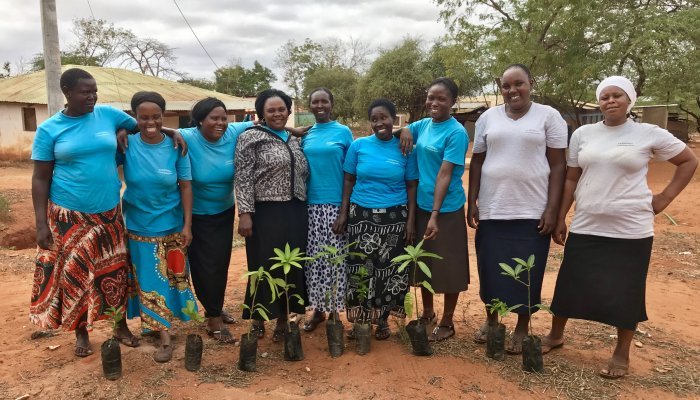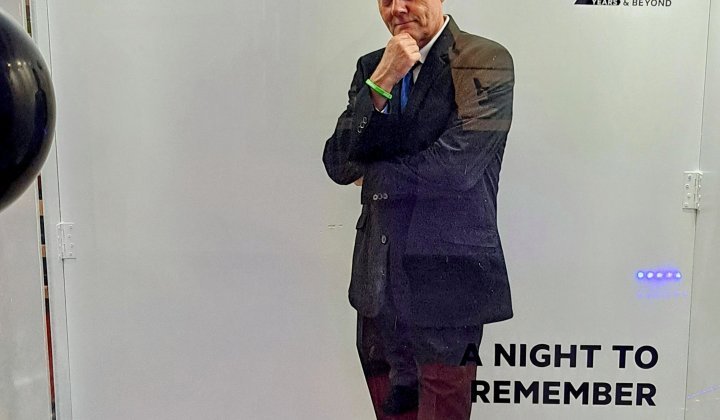A quick Google search will show that there is plenty of commentary on both sides of the micro-lending debate. There are also other issues that aren’t often front-and-centre in an industry that focuses on financial data points.
“Women often face a difficult choice between poverty and risking it all to receive a loan from a traditional micro-finance organisation,” says Jen Gurecki, founder and board president of Zawadisha (“to give a gift” in Swahili). “The poor are penalised severely if they miss a single payment; they can lose everything, including their tin roof. We have even heard women claim they’d rather die poor than lose everything they own.”
This fear is restricting financial inclusion, especially among rural women. It’s the reason Zawadisha, which began as a grassroots project in Kenya in 2010, doesn’t penalise its members if they miss a payment. The organisation understands that in any given month, purchasing life-saving malaria medications or paying for school fees may be better uses of their small income. That’s why women don’t fear Zawadisha and why its reputation makes it so appealing.
“They have an elected chairlady who keeps the women accountable and a treasurer who records all of the transactions,” Gurecki explains. “We work directly with these two women to understand who should – and shouldn’t – receive a loan. Because these women have no formal credit history, we’re using their social capital to establish their creditworthiness.”
The women have a two-month grace period before they need to make their first payment, which includes a 10% flat fee to administer the loan. The organisation doesn’t charge any penalties if the payment is early or late. And once the loan is repaid in full, in either six or twelve months, the women can apply for another one.
“We made about fifty loans in our second round and last year we made 1 228,” she says. “Because women can qualify for a second loan once they repay their previous loan, we’re able to work with women for many years. We strive to serve more women every year and hope to reach at least 2 500 soon.”
Visitors welcome
The organisation has experienced ups and downs over the years. Gurecki describes 2015 as a somewhat painful time for the organisation to re-evaluate its work, make significant changes and commit to moving forward. But the hard work paid off. In 2016, Zawadisha opened a proper office, launched a peer educator programme, and partnered with Airbnb to offer guests multi-day experiences with the team.
“There is tremendous demand for our services in the rural communities where we work,” she says. “Our short-term goal for growth is to ensure that every single household has solar lamps and water tanks. Our long-term goal is to expand into other underserved rural communities through partnerships.”
Above and beyond ensuring that women have access to clean water and energy, Gurecki hopes Zawadisha will help transform the narrative about African women. She wants the organisation to contribute to building healthy ecosystems where the economic, social and environmental needs of communities are addressed.
“I spend a few months in Kenya a year supporting our in-country team, and take on a large chunk of the fundraising in the United States,” she says. “To grow the organisation we actively write grants, hold fundraisers and cultivate donors. We are currently working with impact investors to spur our growth.”
Micro-lending myths
Ultimately, Gurecki believes that micro-credit professionals and advocates have an opportunity to build solutions and tell stories that move beyond the limitations of traditional economics. She also believes that it’s high time the industry goes beyond development stereotypes.
“Micro-lending has found incredible success in telling a single story about the poor African woman,” Gurecki says. “It’s part of the ‘mythmaking’ that’s led to the creation of iconic images of ‘empowered’ women and simplistic slogans. Many of us in the industry tell the story of a single $25 loan lifting a woman out of poverty when there is ample data that it doesn’t.”
Gurecki believes that this has rendered the term ‘empowerment’ nearly useless. Why? Because it stands for everything and nothing all at the same time. Worse, the industry’s intended beneficiaries are made silent while outsiders construct their identity.
“Perhaps we perpetuate these myths because we need something to believe in, something to sustain us as we face overwhelming obstacles of poverty and inequality, pain and suffering,” she says. “Our moral conviction and sense of purpose can be so deeply tied to these constructs that we arguably have no choice but to create and sustain our belief in our own myths.”
Real people, many stories
Despite the good work that many organisations do in helping millions of people around the world, there are consequences that can be difficult to discern. Indeed, Gurecki believes that the industry has unfortunately and unknowingly contributed to recurring themes – “vulnerable or virtuous” – that exist about women.
“Women, both as individuals and as a larger, homogenous demographic, are portrayed to fit neatly into the predetermined construct of poverty,” she says. “This is problematic in the sense that it results in policies and strategies that are ineffective, not to mention also locking women into a singular time and place devoid of context.”
Because lives are far more diverse, they deserve to be represented in ways that tell the whole story. And if the industry wants to create radical change, it cannot continue the mythmaking that dehumanises the people it aims to help. It needs to unravel the single stories it’s creating about the poor. And while the process is messy – and requires examining beliefs about entrepreneurship, capitalism, development, globalisation and the like – it’s essential.
“Poverty is a cross-cutting, complex issue, yet it is often reduced to a simple economic understanding of the net worth of an individual: a net worth that can be moulded – or shall I say transformed – by entrepreneurship, the free market and micro-credit,” she says. “But we should not confuse wealth with well-being; economic activity alone cannot account for what is important in people’s lives. There are other forms of capital accumulation – social, natural and human – that play a significant role in the health and well-being of people and communities.”
If you’d like sign up for Zawadisha’s newsletter, visit them in Kenya (they love hosting volunteers and guests!) or make a financial contribution to help the organisation grow, go to www.zawadisha.org.
RICH AND POOR
· The average income of the richest 20% of the world's people is now 61 times that of the poorest 20%, compared to a 30-to-one ratio three decades ago.
· The net worth of the 358 richest people is equal to the combined income of the 2.3 billion poorest people in the world.
· The poorest 20% of the world's population accounts for less than 1% of world trade and investments.
· Capital markets transact $1.3 trillion per day. By contrast, micro-lending volume worldwide is approximately $30 million per day.
· The World Bank reports that 30 million micro-loans are presently made worldwide per year. The total number is growing at a rate of 30 to 40% per year. The total market for micro-loans is estimated to be several hundred million people.
· Women represent about 40% of the world's paid labour force. In non-agricultural work, the average woman's wage is only three-quarters that of a man.
· Grameen Bank in Bangladesh has lent more than $2 billion to more than two million villagers, most of them women. The average loan is less than $100.
· A study conducted by Prof. David Gibbons of the Malaysia University of Science revealed that over 50% of Grameen members studied escaped poverty over a ten-year period, compared to only 5% in a control group.









